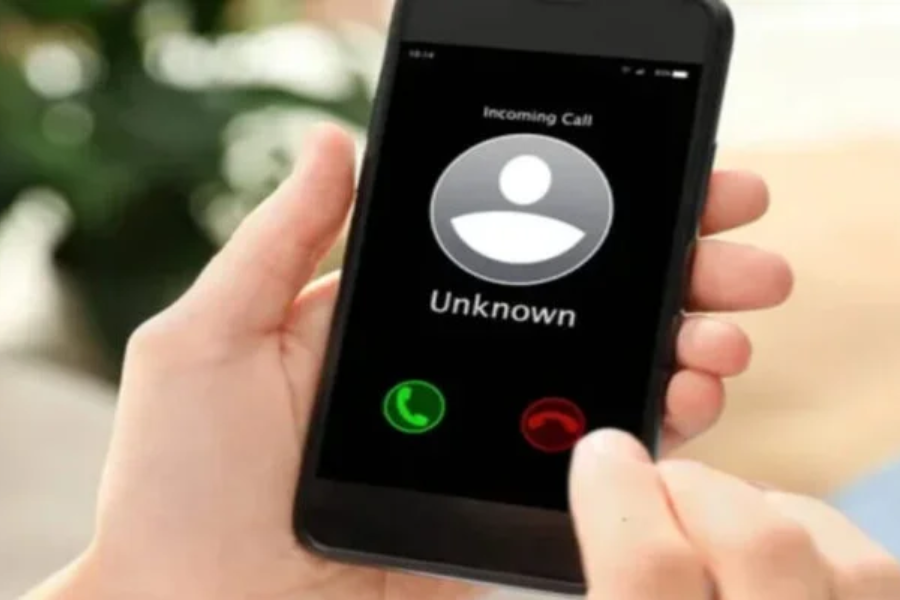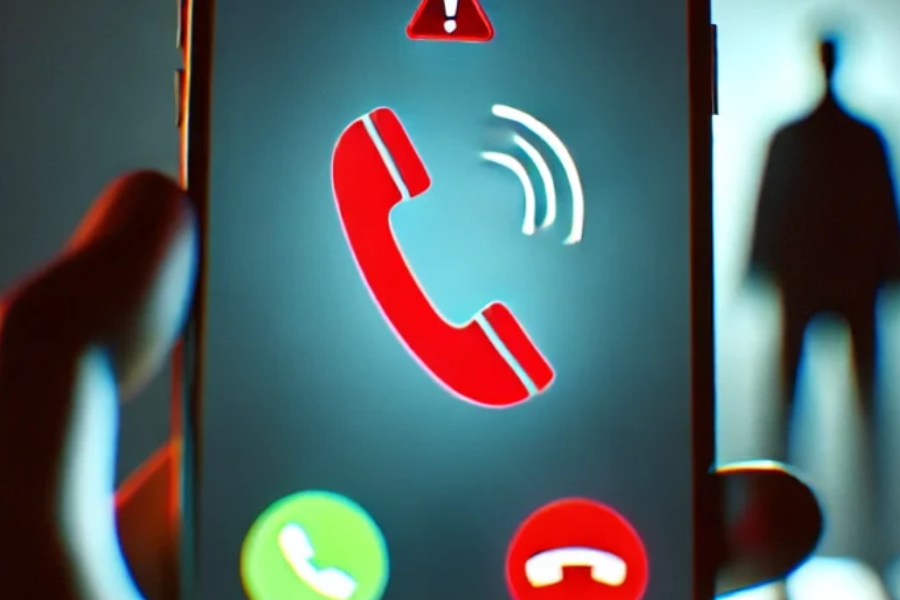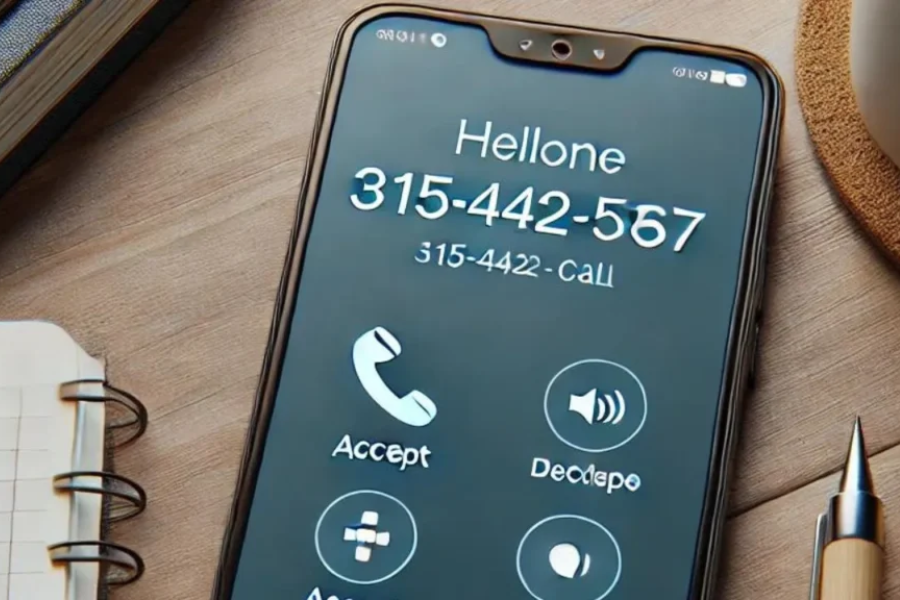Investigating 315-442-5267: Scam Alert or Important Information?
Introduction
In our increasingly digital world, receiving calls from unknown numbers has become a frequent cause for concern, particularly as phone scams continue to proliferate. One number that has recently come under scrutiny is 315-442-5267. This article aims to unravel the mystery surrounding this number and offer essential guidance on safeguarding yourself against potential scams.
Understanding Phone Scams in 2024As we navigate the digital landscape of 2024, the prevalence of phone scams has reached alarming levels. These scams are not only increasing in number but also evolving in sophistication, making it imperative for individuals to remain vigilant and informed. This section will explore the mechanics of phone scams, the common types encountered today, and the psychological tactics employed by scammers to exploit unsuspecting victims.

The Growing Threat of Phone Scams
Phone scams have become a widespread issue, affecting millions of people annually. According to recent statistics, millions of Americans report losing money to these fraudulent calls, with billions of dollars lost each year. The rise of technology and the accessibility of communication devices have empowered scammers to reach a broader audience than ever before.
Evolution of Scamming Techniques
Scammers continuously adapt their strategies to evade detection and maintain their deceptive practices. Here are some notable trends in the evolution of phone scams:
- Caller ID Spoofing: This technique allows scammers to disguise their phone numbers, making them appear as legitimate callers. By faking caller ID information, they can exploit trust and encourage victims to answer the call.
- Personalization: Many scammers now use information gleaned from social media or data breaches to personalize their pitches, making their scams more convincing. By addressing victims by name or referencing familiar details, they can create a false sense of legitimacy.
- Advanced Technology: The use of robocalls has surged, with automated systems capable of making thousands of calls per minute. This high-volume approach increases the likelihood of reaching susceptible individuals.
Common Types of Phone Scams
Understanding the various types of phone scams can help you recognize potential threats. Here are some of the most common scams prevalent in 2024:
- Robocalls: Automated calls that deliver pre-recorded messages. Often, these calls promote fake products or services and may lead to phishing attempts.
- Imposter Scams: Scammers impersonate government officials, IRS agents, or representatives from well-known companies to extract money or personal information.
- Tech Support Scams: Victims receive calls claiming their computer has a virus or security issue. Scammers often request remote access to the victim’s device to “fix” the problem, which can lead to data theft.
- Debt Collection Scams: Scammers posing as debt collectors demand payment for fictitious debts, using high-pressure tactics to scare individuals into paying immediately.
- Lottery or Prize Scams: Victims are informed that they have won a prize or lottery, but must pay a fee to claim their winnings. These scams exploit the victim’s hopes and dreams of easy money.

Psychological Tactics Employed by Scammers
Scammers are adept at using psychological tactics to manipulate their targets. Here are a few common techniques:
- Creating Urgency: Scammers often pressure victims to make quick decisions, using phrases like “This is time-sensitive!” or “Act now to avoid consequences!” This tactic reduces the likelihood that victims will take the time to think critically about the situation.
- Emotional Appeals: Many scams exploit emotions, such as fear or sympathy. For example, a scammer might threaten legal action or use emotional manipulation to provoke compassion and compel a victim to act against their better judgment.
- Building Trust: Scammers may engage in small talk or friendly conversation to create rapport with the victim. By appearing personable, they lower the victim’s defenses and make them more likely to comply with requests.
Protecting Yourself in a Scam-Heavy Environment
Given the ever-evolving landscape of phone scams, it is crucial to arm yourself with knowledge and strategies for protection. Awareness of common tactics, types of scams, and psychological manipulation can help you stay vigilant and avoid falling prey to these deceitful practices. Educating yourself and others about the warning signs of scams is a proactive approach that can significantly reduce your risk of becoming a victim.

Types of Common Phone Scams
As technology advances, so too do the tactics used by scammers to exploit unsuspecting individuals. Understanding the various types of phone scams is essential for protecting yourself against these deceitful practices. Below are some of the most prevalent scams that you might encounter today.
1. Robocalls
Robocalls are automated telephone calls that deliver pre-recorded messages. While not all robocalls are scams, many are used to promote fraudulent products or services.
- Characteristics of Robocalls: These calls often sound impersonal, delivering a generic message that lacks a personal touch. They may claim to offer deals, solicit donations, or even warn you of urgent issues with your accounts.
- Risks Involved: If you respond to a robocall, you may inadvertently confirm your phone number as valid, leading to more unwanted calls from scammers or telemarketers. In some cases, these calls may even redirect you to a premium-rate number, incurring additional charges.
2. Phishing Calls
Phishing calls are deceptive attempts to acquire personal information from unsuspecting individuals under false pretenses.
- How Phishing Works: Scammers often pose as representatives from legitimate organizations, such as banks or tech companies, and ask for sensitive information like passwords, Social Security numbers, or credit card details. They may use language that creates urgency or fear to pressure victims into compliance.
- Recognizing Phishing Attempts: Legitimate companies will never request sensitive information over the phone, especially if the call is unsolicited. Always hang up and contact the company directly using verified contact information if you suspect a phishing attempt.
3. One-Ring Scams
The one-ring scam is a clever tactic designed to prompt a return call from the victim.
- Mechanism of the Scam: Scammers call your number and hang up after just one ring. This brief interaction might leave you curious about who called, encouraging you to return the call.
- Potential Consequences: When you return the call, you may be connected to an expensive international number or charged a fee for the call. The scammers benefit from the charges applied to your phone bill without you ever realizing you’ve been scammed.
4. Government Impersonation Scams
Scammers impersonate government officials, using fear and urgency to extract money or personal information from victims.
- Common Scenarios: Calls may claim to be from the IRS, Social Security Administration, or local law enforcement, demanding immediate payment for supposed debts or fines. Scammers often threaten arrest or legal action if you do not comply right away.
- Defensive Measures: Always verify the legitimacy of such calls. Government agencies typically communicate through official letters and will not demand immediate payment over the phone. If you receive a suspicious call, hang up and contact the agency directly using official contact information.
Caller ID Spoofing: The Deceptive Technique Behind Many Scams
A significant tactic used in these scams is caller ID spoofing, where scammers falsify the number displayed on your phone to appear legitimate.
- Understanding Caller ID Spoofing: By altering the caller ID, scammers can make their calls seem as though they are coming from local businesses or even government agencies. This tactic exploits the trust individuals have in familiar area codes or official-looking numbers.
- 315-442-5267 in Context: Numbers like 315-442-5267 may be used as a front for various scams. If you receive a call from such a number, it’s crucial to approach the situation with caution. Even if the number appears legitimate, it does not guarantee that the call is safe or trustworthy.

The Case of 315-442-5267: Scam or Not?
Numerous reports have surfaced regarding calls from 315-442-5267, leading to speculation about its legitimacy.
User Reports and Experiences
Individuals have reported various experiences after interacting with this number, including:
- Receiving unsolicited calls.
- Being asked for sensitive information like credit card details.
- Experiencing high-pressure sales tactics.
Such warning signs suggest that these calls could indeed be fraudulent. Nevertheless, it’s crucial to evaluate all possibilities before concluding.
Is There a Legitimate Reason for This Call?
Although many claims indicate that 315-442-5267 is likely associated with scams, some calls may originate from legitimate entities. Businesses sometimes employ third-party services for telemarketing or research purposes, which can lead to calls from unfamiliar numbers.
Recognizing the Signs of a Phone Scam
Familiarizing yourself with the common indicators of a scam can empower you to evade fraudulent interactions from numbers like 315-442-5267. Here’s how to spot potential scams:
- Urgency and Pressure Tactics
Scammers often create a sense of urgency, pressuring you to act quickly. If you feel rushed or threatened, consider it a significant warning sign. - Requests for Personal Information
Authentic organizations will never solicit sensitive details, such as your Social Security Number or bank account information, during unsolicited calls. If asked, terminate the call immediately. - Unfamiliar Caller ID
Be cautious with unknown numbers, especially those from unfamiliar area codes like 315. Research the number before deciding to return the call. - Odd Callback Requests
Beware of calls that prompt you to call back, particularly following a brief missed call—this is often a tactic used in scams. - Robotic Voices
If the call sounds automated or lacks a personal touch, it may not be genuine. Robocalls are commonly employed in scams to maintain anonymity.
Action Steps if You Receive a Call from 315-442-5267
If you find yourself receiving a call from 315-442-5267, consider taking these steps:
- Avoid Answering Unknown Calls
If the number is unrecognized, it’s generally advisable not to answer, especially if it has a history of suspicious activity. - Block the Number
Most smartphones provide options to block unwanted calls. If you suspect a scam, don’t hesitate to block 315-442-5267. - Report the Call
If you believe the call is part of a scam operation, report it to the Federal Trade Commission (FTC) or your local consumer protection agency to help prevent others from being victimized. - Share Your Experience
Inform friends and family about your experience to keep them alert. Scammers frequently target vulnerable individuals, so spreading awareness is crucial.
Staying Secure from Phone Scams in 2024
With the rise in phone scams, maintaining vigilance is vital. Here are some proactive measures to protect yourself:
- Utilize Call-Blocking Applications
Apps like Truecaller or Hiya can help identify and block potential spam or scam calls, leveraging databases of known fraudulent numbers. - Register for the Do Not Call List
While not infallible, signing up for the National Do Not Call Registry may reduce unsolicited calls. - Verify Caller ID Information
Since scammers can manipulate caller IDs, always double-check the identity of the caller before disclosing any personal details.
What to Do if You Become a Victim of a Scam
Should you find yourself targeted by a scam related to 315-442-5267, remain calm and follow these steps:
- Reach Out to Your Bank
If you shared financial information, notify your bank immediately and keep an eye on your accounts for any unauthorized transactions. - Update Your Passwords
If you provided personal data during the call, change your passwords across your accounts for added security. - Report Identity Theft
If you suspect that your identity has been compromised, inform the FTC and local authorities. You may also want to consider placing a freeze on your credit to mitigate further risks.
Frequently Asked Questions
Q: Is 315-442-5267 a scam?
A: Numerous reports suggest that 315-442-5267 is linked to scam activities. However, it’s always wise to verify the legitimacy of any unknown call.
Q: What should I do if I receive a call from 315-442-5267?
A: It’s best to avoid answering unknown numbers, block the number, and report it if you suspect it to be a scam.
Q: Can I recover my money if I fall for a phone scam?
A: Recovery may be possible depending on the circumstances, but it’s critical to contact your bank immediately to report any fraud. They might be able to reverse unauthorized transactions or provide other assistance.
Conclusion
The issue of phone scams is increasingly pertinent, and numbers like 315-442-5267 often raise alarms for many. While not every unknown call is fraudulent, it is prudent to exercise caution. By recognizing the warning signs, blocking dubious numbers, and reporting scams, you can better safeguard yourself and assist others in avoiding these deceptive practices.
Read More: Bee Bom






